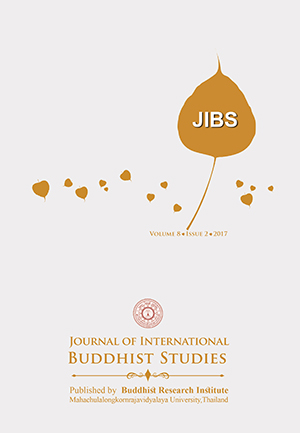Women Empowerment in Buddhism : The Elimination of Gender Inequality
Keywords:
Buddhism, Empowerment, Gender, InequalityAbstract
The empowerment of women is one of the solutions to the problems of inequality, subordination and marginalization that women face in the society. However this kind of empowerment is only partial, for all though they have economic and political power, they are kept out of decision making or they are dependent on their husband, father or brother for crucial decisions. Hence in order to change this situation, it is necessary that women have to realize their own nature and understand the value of their own existence. When they realize their own nature they will have confidence and will participate in decision making independently. This will be possible only when they will be empowered spiritually. However, this also means to bring a significant change in the social mentality. Many a time, a woman has confidence and has realized her own potential, but society prohibits and blocks her progress, her problems cannot be solved. In other words, to solve the problems of the woman, and in order to empower her it is also necessary that the society has to change its patriarchal mentality.
References
Dixit, Shailini.(2008). Patriarchy and Feminine Space: A Study of Women in Early Buddhism. Manak Publications. p.18.
Friedman, John.(1992). Empowerment: The Politics of Alternative Development. Blackwell Publishers.p.28.
Hajira Kumar and Jaimon Varghese.(2005). Women’s Empowerment: Issues, Challenge & Strategies – A Source Book, (eds.), Regency Publications, New Delhi.p.54-55.
Harvey, Brian, Peter.(2000). An introduction to Buddhist ethics: foundations, values, and issues. Cambridge university press. P.357.
Indra, M.A.(1995). The status of women in ancient India: a vivid and graphic survey of women's position, social, religious, political, and legal, in India. Motilal Banarsidass Publishers, Delhi.p.237.
José Ignacio Cabezón.(1992). Buddhism, Sexuality and Gender. State University of New York Press, Albany.p.8.
K. T. S. Sarao.(2010). Origin and nature of ancient Indian Buddhism. Munshiram Manoharlal Publishers.p18.
Me Me Khine.Dr.(2016) .Understanding Nobel Women in Jakatar Stories. Journal for International Buddhist Studies. Vol.7 No.1: January- June, 2016.p.110.
Narasu, P. Lakshmi.(1992). The Essence of Buddhism. Asian Educational Services, New Dehli.p.89.
Neelam Gorhe,Dr.(2005). National Level Consultation on Empowerment and Livelihoods. Poorest Area Civil Society (PACS) Programme.p.1.
R.Venkata Ravi, V. Narayana Reddy and M. Venkataramana.(2004). Empowerment of People: Grassroots Strategies and Issues, (eds.), Kanishka Publishers, Distributors, New Delhi.p.8.
Sharma, S. Ram.(1995). Women and education. Discovery Publishing House.p.29.
Talim, M.V(1992).Women in Early Buddhist Literature, University of Bombay.p.121.







